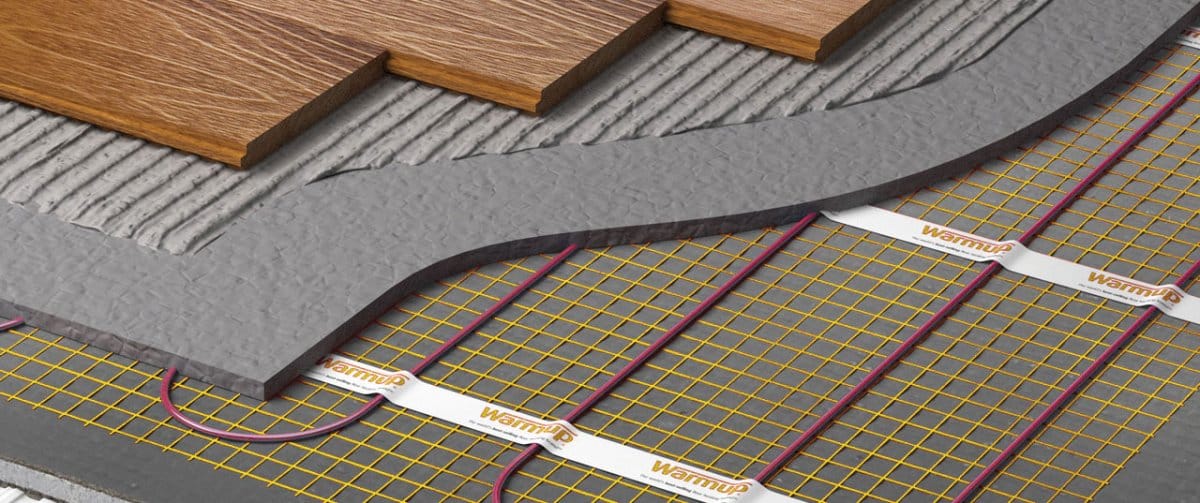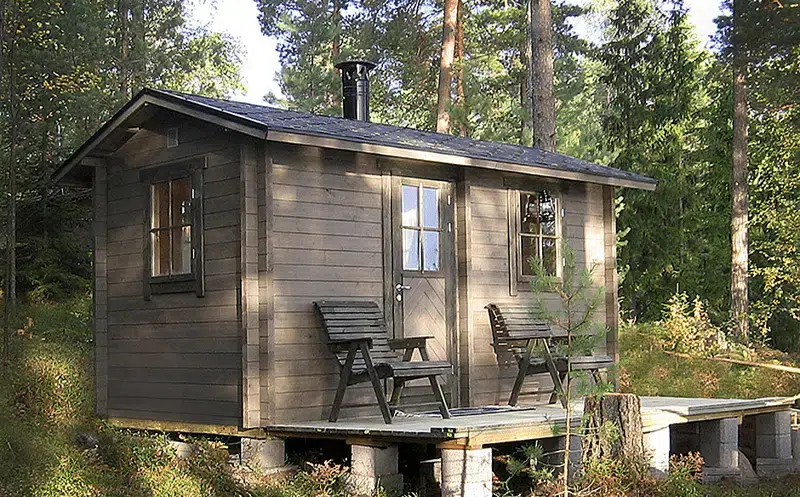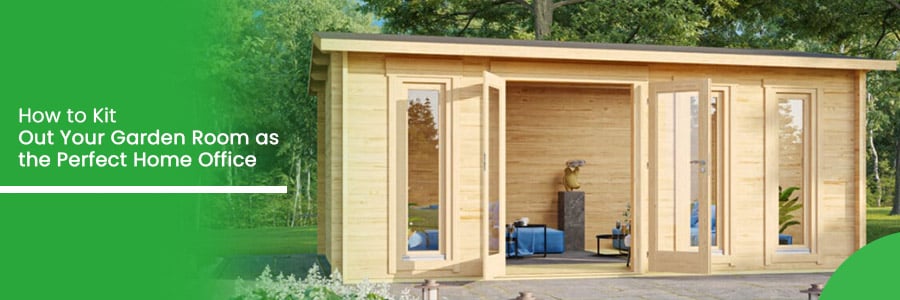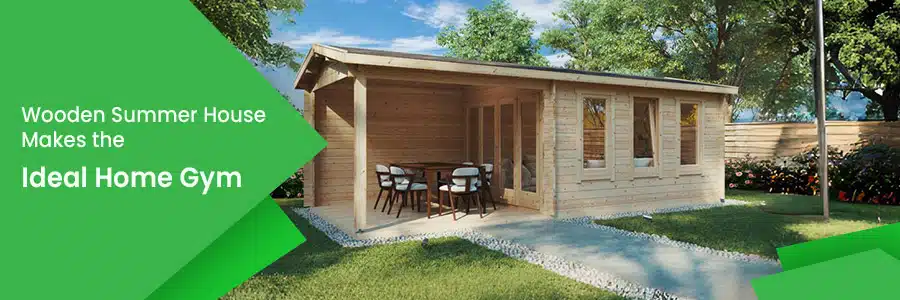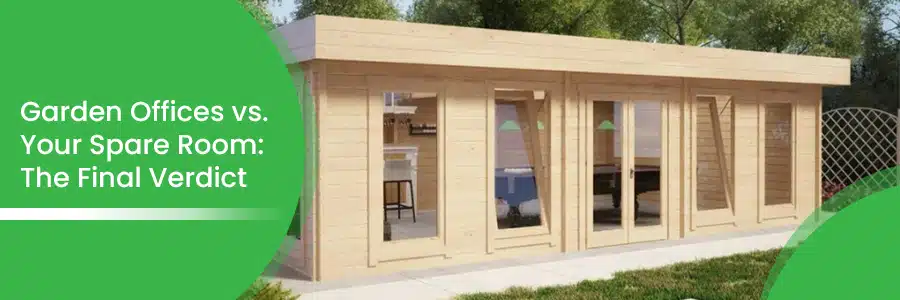Underfloor Heating in the Residential Log Cabin
12.04.2018
Whether you use your log cabin as a garden office, a weekend cottage, a holiday home for hot tub holidays, for your own recreation, or to rent it out, or you live permanently in such a residential log home, even with larger wall thicknesses of 70mm or more, and the excellent insulation coming from the timber itself, it would still be a good idea to have additional insulation installed, and a way of heating the log cabin.
We have already provided some advice on ways of heating a log cabin, and one of the many options is installing an underfloor heating which may not be as romantic as an open fireplace, for example, but it can well be combined with all kinds of different approaches be it an open fireplace or a modern wood burning stove where you can watch the flames behind a glass door, or any other heating option, and it will also be able to heat up the log cabin just by itself.
What are the advantages of an underfloor heating in a log cabin?
Log cabins to live in are often used as holiday homes or weekend cottages. So they are by design smaller than log cabins used as main family houses. However, sparing living space is always a good idea, and having the heating element under the floor will free up wall space. No need for wall mounted radiators or stoves or any heating elements using up the precious living space.
It is nice to feel the heat underfoot, especially coming in from the snow or nasty, wet weather with cold feet to relax in the comfort of your log cabin, your feet will just love feeling the warmth of the floor.
Another big advantage is the low temperature on which underfloor heatings run. A lower temperature will always be much easier to heat up for any heating system, be it a burning stove or a heat pump. For solar powered systems, it is one of their main prerequisites for effective function that the water entering the heating element has a low temperature. That way, the potential difference from cold water to heated water becomes much bigger.
Another advantage becomes relevant, when you have your log cabin installed near your main house being heated by a central heating system. While a central heating system with wall mounted radiators runs on higher temperatures than an underfloor heating, you could extend two pipes, one going to the log cabin for hot water and one going back to the main house for cooler water that has already given away its heat into the inside of the log cabin.
Mixing valves and thermostats may help you to get a water temperature suited for the underfloor heating. Depending on the distance from the house to the log cabin and how well you could insulate the heat water pipe, it might have lost some of its heat already on the way.
Of course other solutions like central heat storing water tanks powered by stoves, solar or heat from external heatings are also possible in residential log cabins.
How do underfloor heatings in log cabins work?
Generally the function in a log cabin is the same as in any other house: hot or warm water is circulated through tubes or rather a grid of tubes in the floor. The heating follows two main principles: The warm floor radiates heat and air heats up at the surface of the floor and rises up to make way for cooler air to get heated up as well. Radiation and convection.
Valves and thermostats can regulate the temperature for every circuit, so you have the option to provide different rooms with different circuits, and the temperature in each of them is regulated automatically by the central control unit adjusting the water temperature for each room, or by speeding up or slowing down the speed of the water flow.
Of course, you will have the floor below the grid insulated very well, not to lose heat into the ground and it might also be good to rather have a thinner floor layer above the grid than a thicker one. Except you would like to use the floor as a heat storage. If you embed your tubes in a thick layer of concrete, you will need quite a lot of energy to heat the concrete up, but after that, the heated mass will continue giving off heat for many hours.
There are also electrically powered underfloor heatings. However, due to their energy consumption, they are probably better suited for smaller log cabins. For 20m², you might have to pay more than £1,000 for a kit of 3,000W. But they are very easily installed, plugged into a socket and just go under a carpet.
What type of flooring is suited best for an underfloor heating in a log cabin?
Usually, you will have a floor of wooden planks in your log cabin. This is a good base to build on, as the timber with its excellent insulating properties provides a good insulation to the ground. Often times the floor planks do have a good underfloor ventilation so that the insulation for the underfloor heating can be laid directly onto them. The tubes go onto the insulation and the final floor goes above them. A rather dense grid of supporting beams might be advisable to keep the floor itself thin and therefore allow an easy passage of the heat into the room.
Dry screed is also a good option. You could integrate the tubes into a pattern of a double layer of dry screed, and finish it with any surface like tiles, wood, carpet, stone or vinyl.
For any questions, please contact us or call Oliver at 020 3807 0369!
Categories:
BlogWant to discuss over phone. Let us call back to you
If you need any additional info regarding any product, please fill in the below form and we will get back to you, usually the same or next working day.
Have any questions regarding some product?
If you need any additional info regarding any product, please send us your questions.
